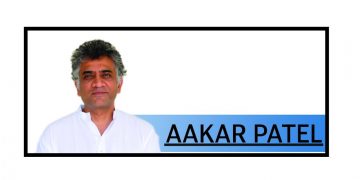Mumbai: The Reserve Bank of India (RBI) left interest rates unchanged Friday for a third straight meeting as inflation stayed stubbornly high. The RBI said the economy was recuperating fast and would return to positive growth in the current quarter itself. The benchmark repurchase rate will be maintained at four per cent, RBI Governor Shaktikanta Das said.
The six-member Monetary Policy Committee (MPC) retained its accommodative stance, signaling its intentions to cut interest rates whenever the situation eases.
A spike in consumer prices forced RBI to pause after cutting rates by 115 basis points this year.
The central bank, which had previously expected the economy to shrink 9.5 per cent in the year to March, revised its forecast after a shallower-than-expected decline in the gross domestic product (GDP) in the July-September quarter.
Das said high frequency indicators point to a recovery gaining traction, with double digit growth in passenger vehicles and motorcycle sales, railway freight traffic, and electricity consumption in October. The GDP, Shaktikanta Das said, will grow by 0.1 per cent in the October-December quarter and by 0.7 per cent in the following three months. Overall, the 2020-21 fiscal will end with a (-) 7.5 per cent de-growth.
The economy had contracted by a record 23.9 per cent in the April-June quarter and by 7.5 per cent in the following three months. The two successive quarters of contraction pushed the economy into a technical recession. This is the first recession since quarterly records started in 1996.
RBI had previously forecast a 5.6 per cent contraction in the quarter through December, followed by a return to growth in the three months to March.
Das said inflation continues to be sticky. Headline retail inflation at 7.6 per cent in October was well above the upper end of the central bank’s 2-6 per cent target band. For H1 2021-22, RBI projected a growth of 21.9 per cent to 6.5 per cent.
RBI saw inflation in the fiscal third quarter at 6.8 per cent and easing a bit to 5.8 per cent in January-March. It is projected to be in the range of 5.2 to 4.6 per cent in the first half of the 2021-22 fiscal.
“Inflation is likely to remain elevated,” Das said, adding that this constrains the monetary policy at the current juncture from using the space available to act in support of growth.
Stating that RBI was ready to take further measures to ease liquidity, he said the central bank will use various instruments at the appropriate time to ensure ample liquidity is available in the system.
Das also announces measures to deepen the corporate bond market and supervisory measures for the shadow banking sector.
RBI raised the limit of contactless card transactions to Rs 5,000 per usage from the current Rs 2,000, with effect from January 1. Also, real-time gross settlement systems (RTGS) will be available 24×7 in the next few days, he said.
“The MPC decided to continue with the accommodative stance as long as necessary – at least during the current financial year and into the next financial year – to revive growth on a durable basis and mitigate the impact of COVID-19 on the economy, while ensuring that inflation remains within the target going forward,” Das informed.







































